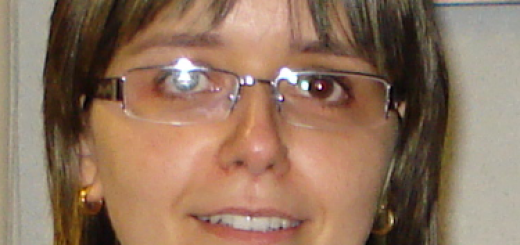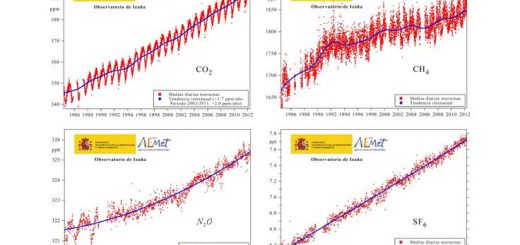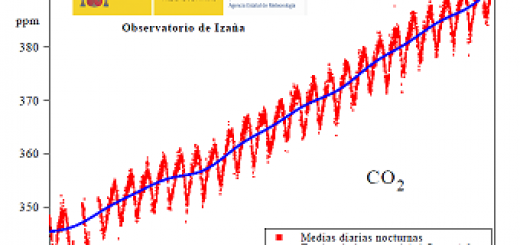First ozone-hole event over Ushuaia in 2011 (September 26, 2011)
![]()

First ozone-hole event over Ushuaia in 2011 (September 26, 2011)
During the last week of September, some few days later after the Day for the Preservation of the Ozone Layer (September 16), the first signature of ozone hole over Ushuaia in 2011 has been recorded.
Vertical profiles of temperature and ozone on September 26 are shown in the graphic. Low ozone values (below 5 mPa) have been recorded between 15 and 20 km, where chemically-induced ozone destruction can be observed. These values are coincident with very low temperatures (below -78ºC), below the temperature of nitric acid trihydrate (NAT) particles formation. Total column ozone for this day was 189 Dobson Units (DU) as recorded by the ECC ozonesonde. The Dobson spectrophotometer at Ushuaia confirmed the low ozone values with a record of 183 DU, lower than 220 DU, the threshold of ozone-hole event. Some days before, on September 21 the ozonesonde profile recorded 288 DU when Ushuaia was out of the polar vortex influence. The maximum Ultraviolet index (UVI) values recorded by our NILU radiometer at Ushuaia, was 3.0 and 4.5, on September 21 and 26, respectively.
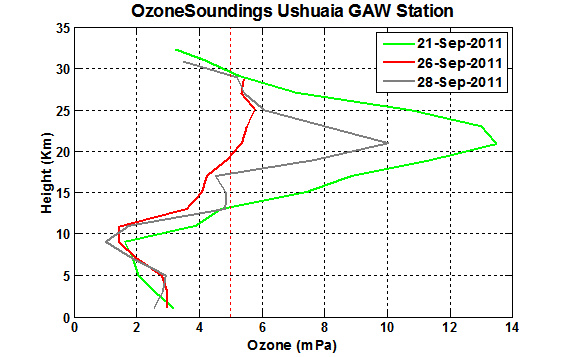
This year, the ozone hole, at this moment at his maximum extension, is considerable greater than 2010 event (25 and 22 million of Km2, respectively). The covered area is near of the maximum recorded value (26 million of Km2 in 2006), as NASA reports. The evolution and forecast of the ozone hole can also be followed at ESA TEMIS project web page www.temis.nl.
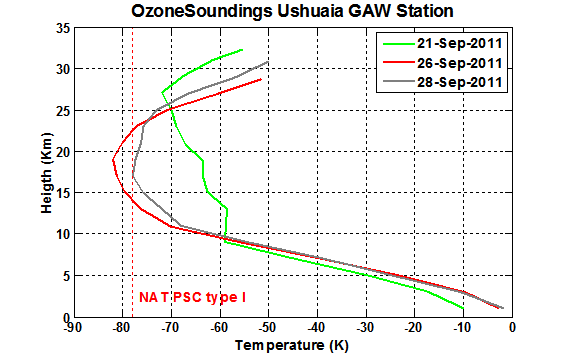
The ozonesonde launching on September 26 was performed because the Temis forecast warned us that Ushuaia would be under the influence of the ozone hole. The launch on September 28 confirmed that the event still affected Ushuaia. That was a successful forecasting. This is a very good example of ozone depleted air affecting a region out Antarctica. You can follow daily ozone-hole forecasts at TEMIS website www.temis.nl.
The ozonesonde program carried out at the Ushuaia Global GAW station is a joint project of the National Meteorological Service (SMN, Argentina), the Government of Tierra del Fuego (Argentina), the National Institute for Aerospace Technology (INTA, Spain) and the Meteorological State Agency (AEMET, Spain). We thank Manuel Cupeiro, Ricardo Sanchez (SMN) and the Ushuaia team for their very nice job with the ozonesonde program.
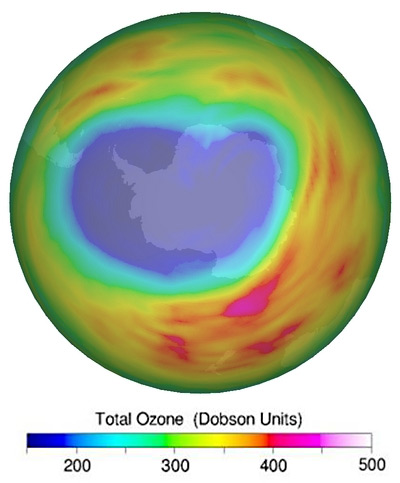
Ozone hole forecasted by TEMIS (MACC-ECMWF) for September 26, 2011
Links:
http://www.wmo.int/pages/prog/arep/WMOAntarcticOzoneBulletins2011.html
http://ozonewatch.gsfc.nasa.gov/
http://ozonewatch.gsfc.nasa.gov/meteorology/figures/merra/ozone/toms_areas_2011_omi+merra.pdf

